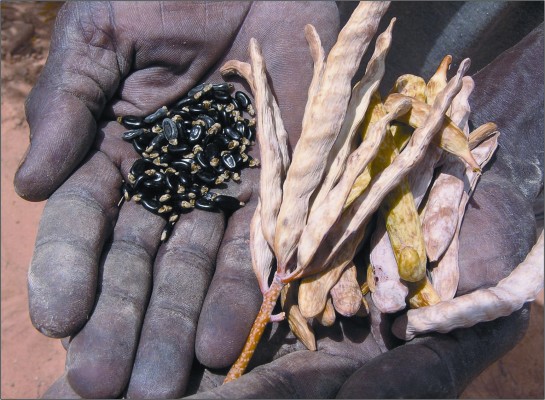
The Acacia Tree Project website is managed by the Food Security and Climate Change team at World Vision Australia.
For centuries, the seeds of certain Australian acacias – commonly known as the Wattle, Australia’s national flower – have formed part of the diet of Australian Aborigines. A number of these Acacia species from Australia’s hot, dry regions thrive under conditions in which annual plants such as crops barely survive. The sub-tropical, arid and semi-arid climate of Australia corresponds with many parts of the world that are subject to famine, such as the Sahelian region of Africa and dry regions of southern India.
The seeds are tasty, safe to consume and nutritious, being high in protein, carbohydrates and fats. Further, the Acacia tree have high potential to provide a range of other products and services, such as building timber, firewood and charcoal, soil stabilisation, windbreaks and soil fertility.
The Food Security & Climate Change (FSCC) team at World Vision Australia has initiated and supported a number of Acacia projects across Africa. The team aims to provide a holistic response to climate change with emphasis on food security, energy and natural resources.
For World Vision and its partners to spread the benefits of Australian acacias to farmers across the African Sahel, vital research is needed to identify the best species for each region, and for food safety trials so that governments can support the widespread introduction into people’s diets.
Wattle we eat for dinner?
